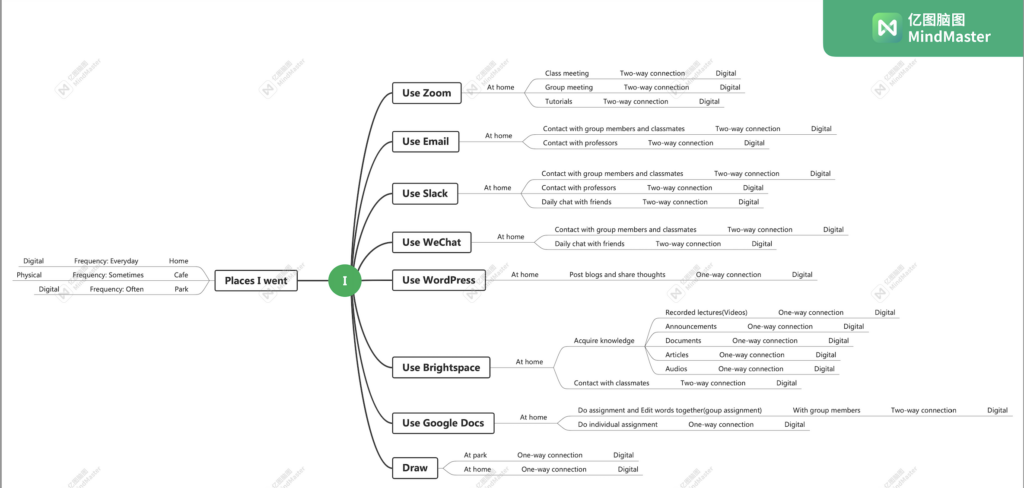I chose this learning activity because it helps me to better comprehend what is a digital identity, and how it really affects and becomes a part of our life.
During the week, all of my classes were online courses, so I spent most of my time at home to have a digital learning as well as achieve my weekly tasks for each course. I often used Email, Slack, BrightSpace, and WeChat to join in class communities, and communicate with my professors, group members, classmates, and friends after the class. Zoom and BrightSpace allowed me to meet online with professors, class members, and group members; meanwhile, I acquired knowledge and studying resources from them. WordPress and Google Docs were the tools I utilized to share thoughts and do assignments(for both group work and personal work). Besides, I also chose to draw both in the park and at home; this helped me find more interesting and meaningful objects to draw so that I could better achieve my weekly drawings.
From my network map, most of my learnings are digital learnings, and most of my connections were from technologies, which surprised me a lot. Specifically, I perceived that when I adopted digital learning, my relationships with professors, friends, classmates, and group members were all two-way connections. We in time communicated with each other and gave instant responses and feedbacks. However, when I studied alone and did individual tasks, my relationship with my class communities was one-way connection. In addition, in terms of the relationships among classmates, it tended to be less connected for online drawing class, since those tasks were all individual tasks; whereas for the class EDCI337 and EDCI339, there were many group assignments, which leads the class members to be more connected. Overall, each class with different methods and different kinds of relationships could lead to a good outcome.
Here is my network map(screenshot and in PDF. format):

Recent Comments